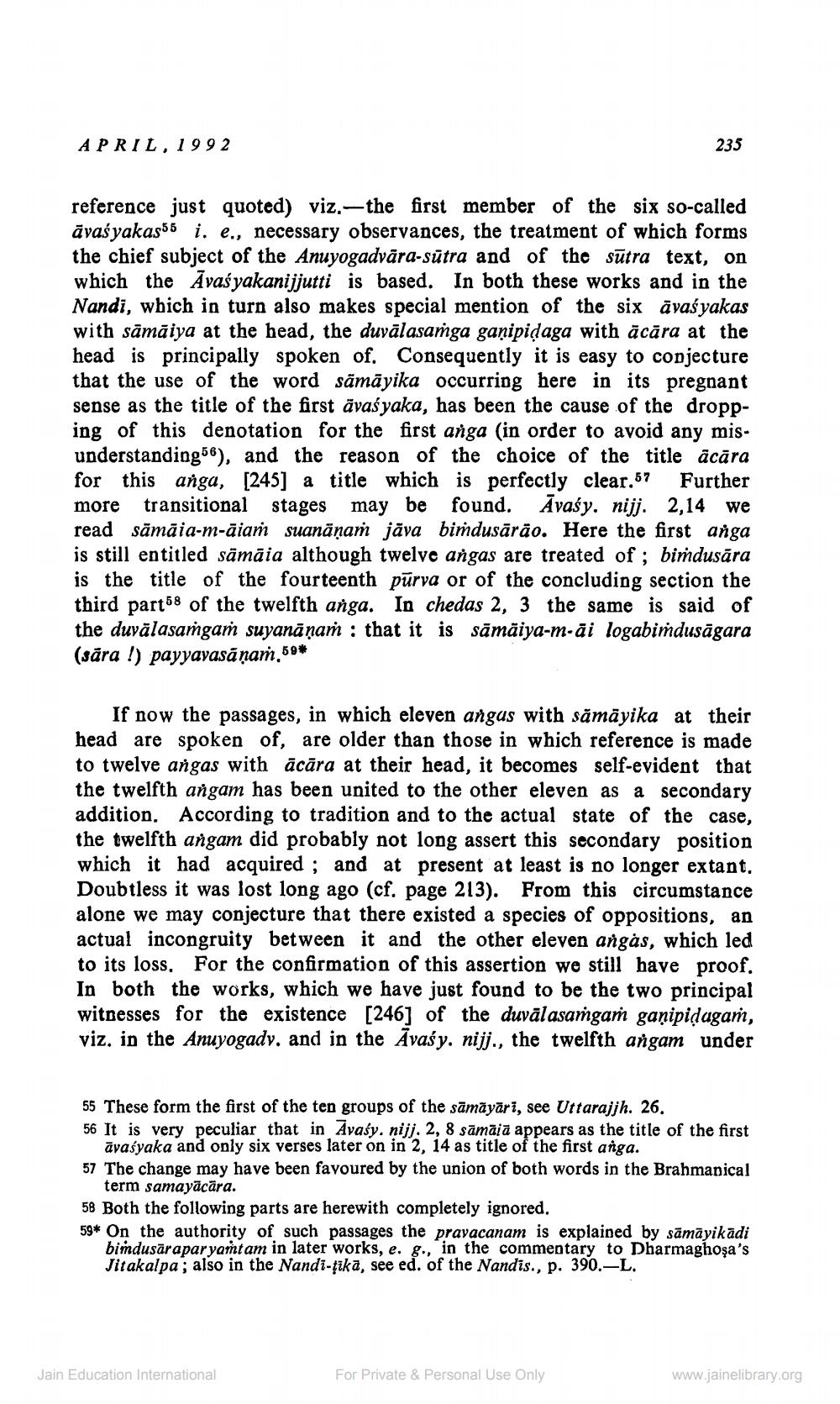________________
APRIL, 1992
235
reference just quoted) viz.—the first member of the six so-called āvas yakas55 i. e., necessary observances, the treatment of which forms the chief subject of the Anuyogadvāra-sūtra and of the sūtra text, on which the Āvas yakanijjutti is based. In both these works and in the Nandi, which in turn also makes special mention of the six āvas yakas with sāmāiya at the head, the duvālasamga gaṇipidaga with ācāra at the head is principally spoken of. Consequently it is easy to conjecture that the use of the word sämāyika occurring here in its pregnant sense as the title of the first āvas yaka, has been the cause of the dropping of this denotation for the first anga (in order to avoid any misunderstanding56), and the reason of the choice of the title ācāra for this anga, [245] a title which is perfectly clear.57 Further more transitional stages may be found. Avasy, nijj. 2,14 we read sāmăia-m-āiam suanāņam jāva bimdusārão. Here the first anga is still entitled sämāia although twelve angas are treated of; bimdusāra is the title of the fourteenth pūrva or of the concluding section the third part58 of the twelfth anga. In chedas 2, 3 the same is said of the duvālasamgaṁ suyanānam : that it is sāmãiya-m-ai logabimdusāgara (sāra !) payyavasānam,59*
If now the passages, in which eleven angus with sämāyika at their head are spoken of, are older than those in which reference is made to twelve angas with ācāra at their head, it becomes self-evident that the twelfth angam has been united to the other eleven as a secondary addition. According to tradition and to the actual state of the case, the twelfth angam did probably not long assert this secondary position which it had acquired ; and at present at least is no longer extant, Doubtless it was lost long ago (cf. page 213). From this circumstance alone we may conjecture that there existed a species of oppositions, an actual incongruity between it and the other eleven angås, which led to its loss. For the confirmation of this assertion we still have proof. In both the works, which we have just found to be the two principal witnesses for the existence [246] of the duvālasamgaṁ ganipidagań, viz, in the Anuyogady. and in the y. nijj., the twelfth angam under
55 These form the first of the ten groups of the sāmāyāri, see Uttarajjh. 26. 56 It is very peculiar that in Avasy, nijj. 2, 8 sāmājā appears as the title of the first
āvasyaka and only six verses later on in 2, 14 as title of the first anga. 57 The change may have been favoured by the union of both words in the Brahmanical
term samayācāra. 58 Both the following parts are herewith completely ignored. 59* On the authority of such passages the pravacanam is explained by sāmāyikādi
bimdusārapar yamtam in later works, e. g., in the commentary to Dharmaghoşa's Jitakalpa; also in the Nandi-tika, see ed. of the Nandis., p. 390.-L.
Jain Education International
For Private & Personal Use Only
www.jainelibrary.org




